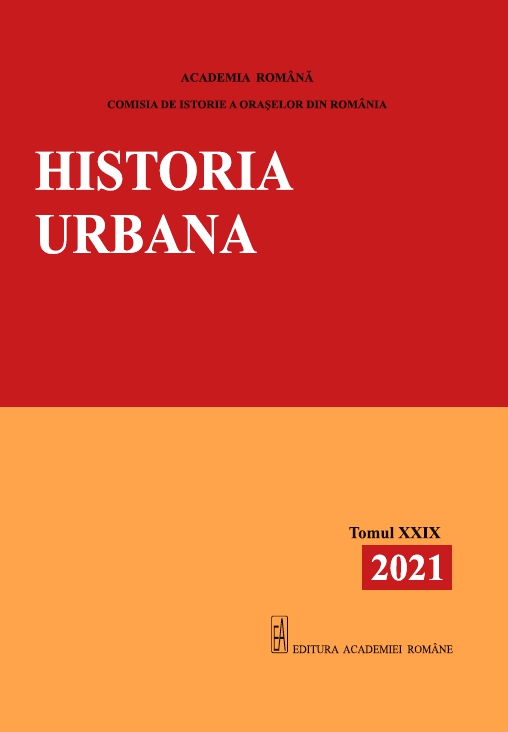Aspecte de viață urbană la Pitești în anul 1882
Aspects of Urban Life in Pitești in 1882
Author(s): Aurel RaduSubject(s): Local History / Microhistory, Social history, Modern Age, Social development, Rural and urban sociology, 19th Century
Published by: Editura Academiei Române
Keywords: Pitești; urbanization; modernization; exhibition; urban life; modern history; 1882;
Summary/Abstract: The present article intends to present the most important events in the urban life of Pitesti (the visit of King Carol I, the participation of the urban patriciate in the first agricultural and industrial exhibition etc.) and to outline the urban achievements and existing delays by focusing on the year 1882.In 1882, the city is fully in the process of development and urbanization, an interesting year due to the dynamics of the events and premieres that interrupt the urban monotony. In the summer of 1882, the first and only official visit of King Carol I to Pitești takes place, during which, on the occasion of the reorganization of the army, he inspected the military units located on the plateau of the city called Trivalea. This is the year in which the Romanian craftsmen organize themselves into cooperation under the guidance of Dimitrie Butculescu (1845–1916), as a counterweight to the foreign craftsmen in the city. In the same context, the first Trades School is set up in the city, which will operate for 10 years with financing from Argeș County, through which it wished to train young Romanian craftsmen. Dimitrie Butculescu is the author of the first unfinished monograph of the city, which records data for the year in question, 1882. He also considers that the city is devoid of vitality, monotonous and sad, but this negative key characterization is only partially true, because in the same year the first Agricultural and industrial exhibition in Pitești is organized, attended by many representatives of the urban patriciate, including local minorities, being successful. In general, the urban patriciate presented various products of the domestic industry that reflected a modest economic life compared to the progress of the western industry.In 1882 it is 10 years since the city was connected to the Bucharest-Pitești railway line, which leads to important transformations in urban life. Since 1869, the authorities have been planning to receive the first train with great pomp, systematizing Coculescu street, which is broadened and aligned, transforming it into Lady Elizabeth Boulevard, the only avenue of the city and the longest artery access to the city center. The city center is radically transformed; at the end of the boulevard the "Carol I" Public Garden is arranged, the only park in the city, which becomes a reference point for leisure and socializing. For reasons of public hygiene, but also for urban considerations, at the southern edge of the city, at the end of 1880 and after many efforts of the administration, Saint George’s city cemetery is commissioned into use. Despite all these urban achievements, the benefits of a modern urban life were still to be realized because the city lacked a network of potable running water and a sewage system for rainwater and wastewater. Most of the streets were paved with river boulders; only the most important streets and the Public Garden benefited from gas lighting and a day and night watch by public guardsmen. The main streets were to continue to benefit from the attention of the authorities that invested much in their modernization: paving with cubic stone, basalt or asphalt, pluvial sewage, ornamental trees (chestnuts, sycamores and linden trees), the fencing of vacant lands etc., to the detriment of the peripheral streets, which were left outside the urban systematization. The public sanitation service was understaffed considering the city’s needs, consisting of 20 employees and a supervisor. Residential buildings had no floor, and public buildings, with the exception of numerous medieval Orthodox churches (10), were virtually non-existent; the boom of monumental constructions for public utility not being recorded until the next two decades. Generally, the urbanization and modernization of the city is carried out with the money borrowed from The House of Deposits and Consignments in Bucharest, after approvals given by The Arges Permanent County Committee, The Ministry of Interior and The Ministry of Public Works.
Journal: Historia Urbana
- Issue Year: XXIX/2021
- Issue No: 29
- Page Range: 21-39
- Page Count: 19
- Language: Romanian
- Content File-PDF

